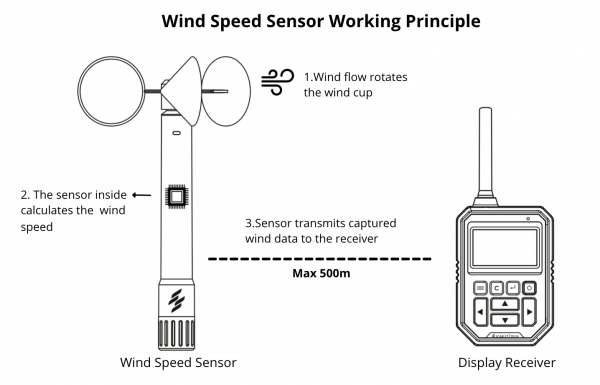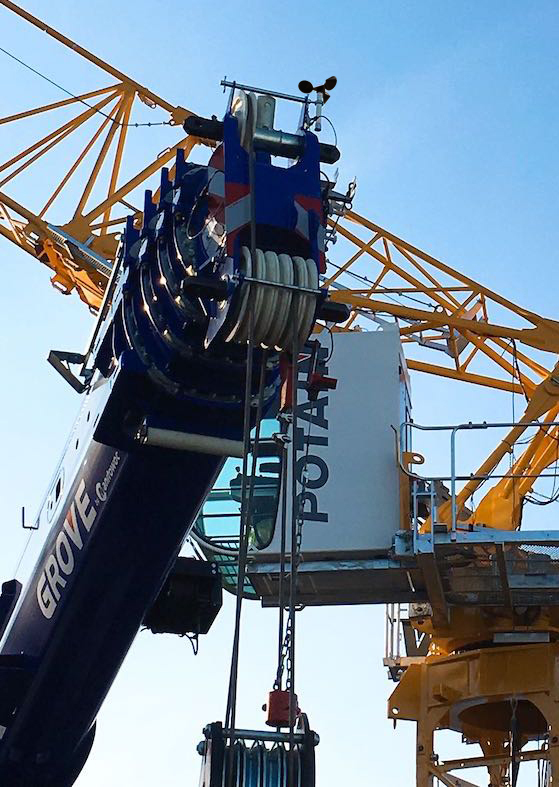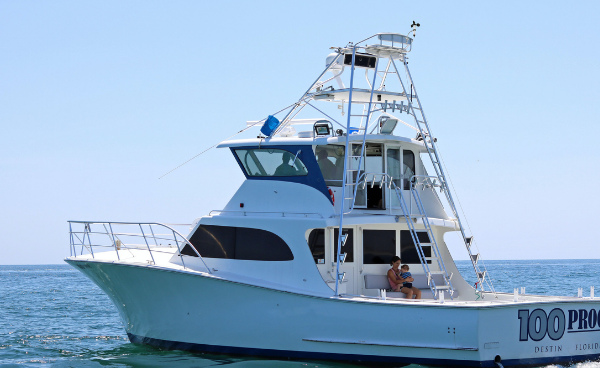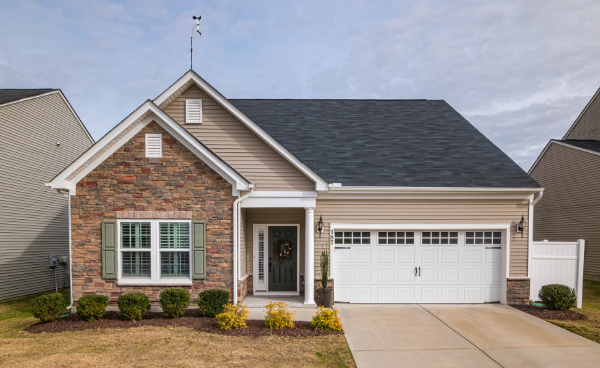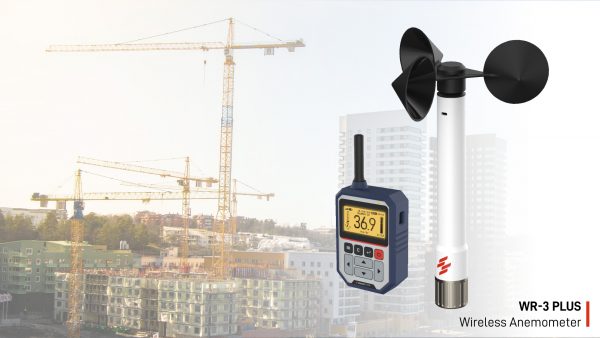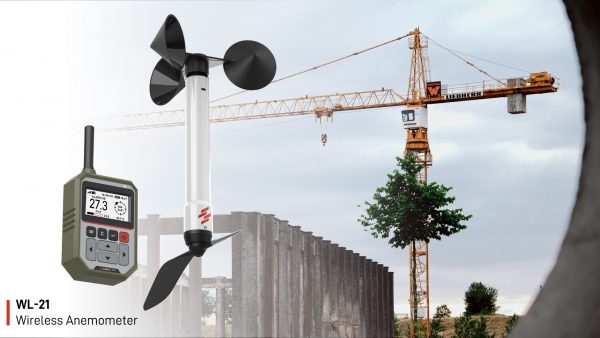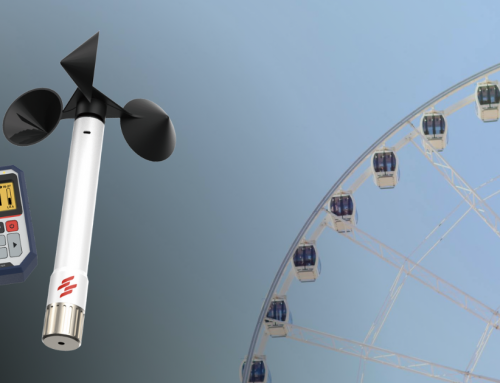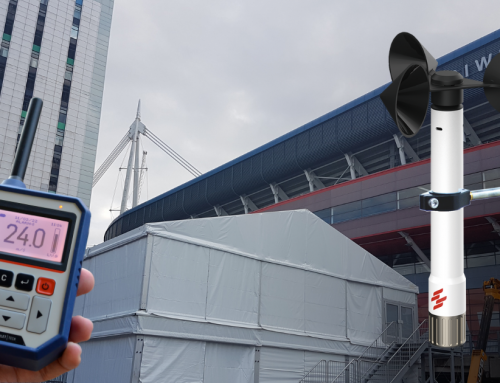Last Updated on
How Does Wind Speed and Direction Sensor Work?
Anemometer is one of the oldest and most ancient instrument in human history. For more than 500 years, anemometer has been used as a tool to measure wind speed and later on to measure wind direction as well. The term anemometer is derived from the Greek word anemos, which means wind. In this article, we will discuss anemometer comprehensively from the history of anemometer to the basic working principle and frequent problems that can be found on the anemometer.
What is the History of Anemometer?
Anemometer was first invented by Leon Battista Alberti in 1450 – an Italian architect. His anemometer is a mechanical anemometer that consisted of a disk placed perpendicular to the direction of the wind that would spin when there is a wind flow, the angle of inclination of the disk momentarily revealing its force.
Following the first invention of mechanical anemometer, many others further improved and developed their own versions of anemometer. Cup anemometer was one of the earliest and most successful anemometer development that is still popularly used up to this day. It is still remain as the industry standards wind measurement device.
Anemometer usually consists of two main parts; the wind sensor and the display receiver. Depending on the measurement types, the wind sensor can be categorized into two types; wind speed sensor and wind speed and direction sensor.
The wind speed sensor is a vertical axis with three hemispherical or half cone cups on top. The concave surfaces of the cups are fixed in the same direction. While the wind speed and direction is a vertical axis with three half-cups on top and a wind vane arrow on the bottom.
The general working principle for cup anemometer is actually quite simple, the wind cup rotations will indicate the wind speed. While the arrow on the bottom of the wind sensor will point to the direction the wind is blowing from.
How Does Wind Sensor Work?
The wind flows cause the wind cups to rotate. The faster the wind blows, the faster the cups rotate. The rotation triggers the rotor of the internal sensor to calculate the wind speed.
How Does Wind Speed and Direction Sensor Work?
The wind speed and direction sensor measures both wind speed and wind direction. The working principle is similar to wind speed sensor but with an addition of wind direction sensor. The rotation of a wind vane arrow transmits the measured wind direction information to central sensor inside the anemometer body, and at the same time send all the captured wind direction data together with other data such as wind speed to the receiver display.
Where to Mount Wind Speed and Direction Sensor?
The wind sensor is usually installed vertically above the ground and at the highest possible point. The location where the wind sensor is gonna be placed is the most important part of installation as it will affect the wind measurement data. The wind sensor should be placed at open space where it is not covered under trees or any other tall objects.
Wind Speed Sensor Mounted on Cranes
Typically for crane operation safety, the crane operator only need to know the wind speed, therefore wind speed sensor is more suitable for crane operation. The wind speed sensor is mounted on the highest possible point, usually at the crane’s boom. The wind cups must be fully exposed to the wind and able to spin freely at all boom angles.The wind sensor is mounted on the boom using a self-leveling magnet mount, while the display receiver is mounted inside the crane cabin.There should be a clear and unobstructed line of sight between the wind speed sensor and the crane’s cabin.
Featured on the picture: Scarlet’s WR3-Plus, an industrial grade wind speed crane anemometer with stable and long transmission distance up to 500m. It also has automatic wind alarm that will alert crane operator when wind speed exceeds a certain limit.
Wind Speed and Direction Sensor Mounted on a Boat/ Vessel
Wind speed and direction is a crucial information for a boat or vessel for boating safety. The wind is responsible for creating waves and swell.With the use of anemometer, sailors can obtain reliable weather information and grasp the wind conditions outside. Wind sensors are usually installed on the highest point which is on the mast.
Featured on the picture: Scarlet’s WL-21, wind speed and direction wireless anemometer with stable and long transmission distance up to 500m.
Wind Speed Sensor Mounted on Building/Roof-top
The wind speed sensor installation on a building or roof-top is pretty much very straight forward. You only need to mount the sensor at the roof top, it is recommended to fix the wind sensor on a mast so that the installation height of the wind sensor is higher than the top of the building.This way the wind sensor can measure the wind in a more accurate manner.
Common Problems of Wind Speed and Direction Sensor
What are the possible common problems when it comes to wind speed and direction sensor? Here are some things to note.
Common Problems of Wind Speed Sensor
- Inflexible wind cup rotation
After using anemometers for few years or even longer, one of the common things that happen is for the oil in the rotation bearing to dry up, this cause the wind cup rotation to be less smooth and less sensitive to wind especially in low wind speed. While in high wind, the wind flow is strong enough to make the wind cup and bearing rotates, so it will not affect much.
However if this happens to a new wind speed sensor, it may be due to a problem with the bearing’s internal components or just simply a faulty product, it is recommended to immediately contact the anemometer manufacturers for return and exchange.
- Damaged Wind Cup
A damaged or deformed wind cup can lead to inaccurate wind speed measurement. Therefore, no matter how small the damage is, a damaged wind cup should be replaced with the new one to ensure accurate wind speed measurement. Scarlet’s anemometers have a replaceable wind cup design, this is a good thing because in case the wind cup is damaged, you do not have to buy a new wind sensor, you only need to replace the wind cup and it can be used again.
- Small Particles
Most anemometers usually also has a temperature measurement which is measured through a small hole in the sensor body. In windy and sandy weather, some fine small particles may enter the sensor shaft and cause the temperature sensing to be less accurate. Therefore, users should perform maintenance and clean the wind speed sensor to ensure the accuracy and durability.
When looking for anemometers, you can opt for the ones with IP67 protection grade (Ingress Protection ) like WR3-Plus and WL-21 Wireless Anemometers, which means it is 100% protected against solid objects like dust and sand, and it has been tested to work for at least 30 minutes under 15cm to 1m of water.
- Zero Wind Speed
There may be two reasons for the wind speed sensor reading to show zero value;
Check the operating wind speed measurement range of your anemometer. Make sure the anemometer is operating within its wind speed measurement range. If it shows zero value, then it probably is way below its minimum wind speed measurement value. Scarlet’s anemometer wind speed measurement range starts from as low as 0.3 m/s.
Another possible reason is that the cable is damaged and the speed conductors are in intermittent contact. Cabled anemometer is quite a hassle to use when your installation involves a lot of height. The alternative solution for this is to use wireless anemometers, it is cable-free, avoid all the hassle and problems with cable.
If the one you already have now is the cabled anemometers, you can first check the cable and the power supply system, or find a technician to help you fix it.
Common Problems of Wind Direction Sensor
- The wind vane is not flexible
Wind direction sensor is much simpler than wind speed. The most common problem with the wind direction sensor is having inflexible wind vane rotation. If your wind direction sensor is inflexible and a little bit stuck after a long time of use, the possible reason is that the oil in the bearing dries up or some of the internal components are severely worn. In this case, you need to replace the sensor element.
Find More Wind Speed and Direction Sensor-About Scarlet Wireless Anemometer
About Scarlet Wireless Anemometer
Scarlet’s wireless anemometers offers a professional and industrial-grade accurate wind measurement. It is cable-free with long and stable transmission distance up to 500 m, allowing easy and flexible installation across different industry application such as construction, cranes, boat, Hollywood film production, and other rigging-related services in the entertainment industry.
The wind data can be conveniently read on the receiver display. Scarlet wireless anemometer has data logging function which can be used for further wind data analysis. The wind sensor is IP-67 rated, which means waterproof and dust tight, suitable for use even in extreme weather condition.
The battery supports long-term continuous use up to 3-year, no need to change back and forth so often.
Need Wind Speed Measurement?
Check the WR3 Plus – Wireless Wind Speed Meter
✓ Wireless range: Max 500 meters
✓ Display: current/average/maximum wind speed, wind direction, temperature, wind chill, Beaufort scale, air pressure, hourly report & history wind graph
✓ Selectable intervals: 2s, 5s, 10s, 1min, 5 mins, 10 mins, 60 mins
✓ Memory capacity: 64MB ~1 year continuous recording (based on 10s interval)
✓ Wind speed alarm: Yes, visual & audible
Need Wind Speed & Direction Measurement?
Check the WL21– Wireless Wind Speed and Direction Data Logger
✓ Wireless range: Max 500 meters
✓ Display: current/average/maximum wind speed, temperature, wind chill, Beaufort scale, air pressure, hourly report & history wind graph
✓ Selectable intervals: 2s, 5s, 10s, 1min, 5 mins, 10 mins, 60 mins
✓ Memory capacity: 64MB ~1 year continuous recording (based on 10s interval)
✓ Wind speed alarm: Yes, visual & audible

